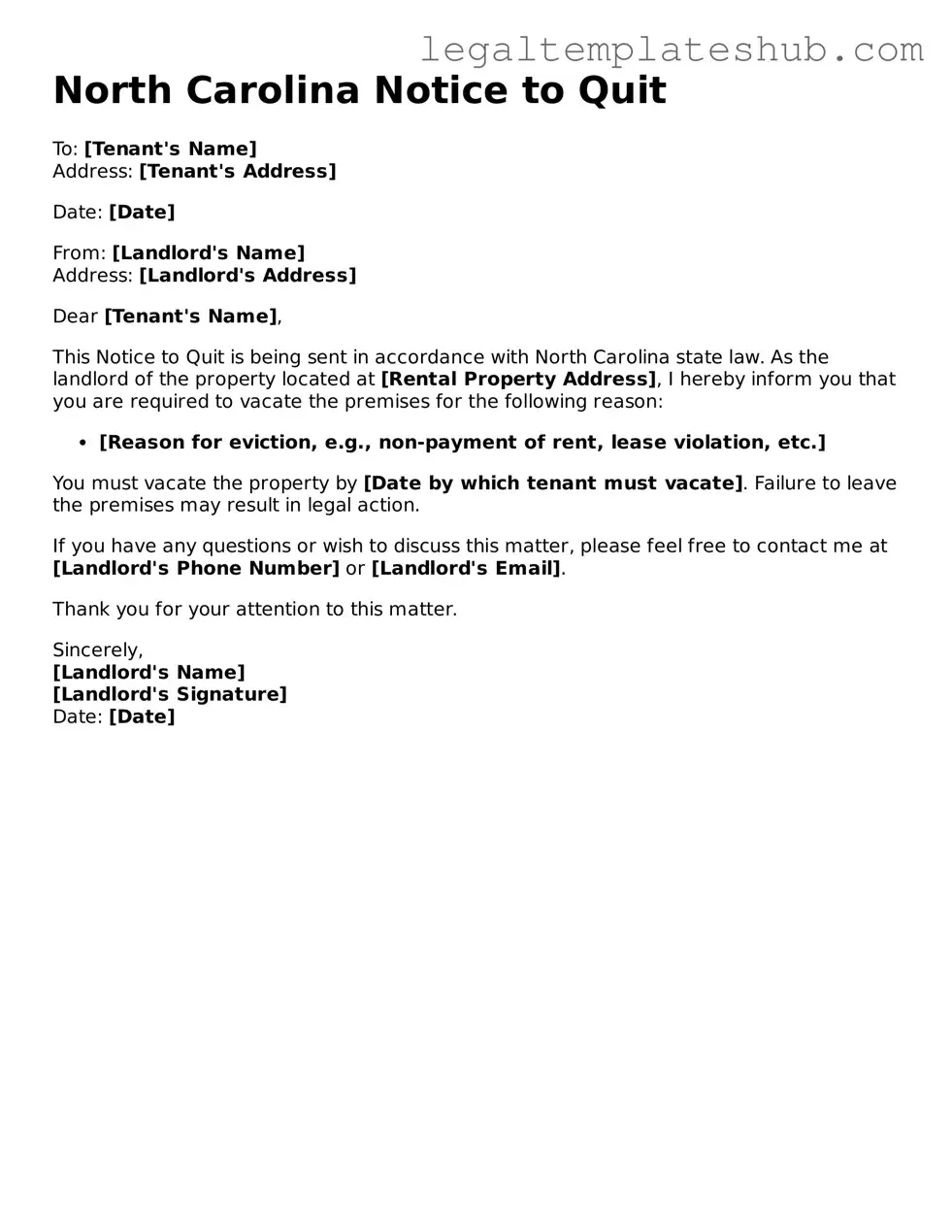Printable Notice to Quit Document for North Carolina
The North Carolina Notice to Quit form is a legal document used by landlords to inform tenants that they must vacate the rental property. This notice is an essential step in the eviction process and outlines the reasons for termination of the tenancy. Understanding this form is crucial for both landlords and tenants to ensure their rights are protected.
To fill out the form correctly, click the button below.
Access Editor
